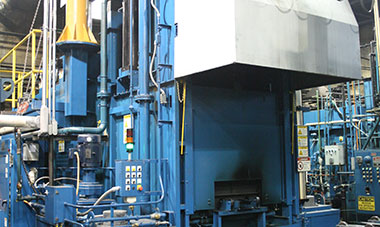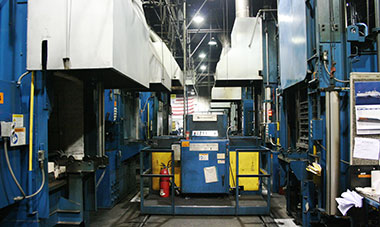Precipitation Hardening Stainless Steel and Other Metals
At Specialty Steel Treating, we offer several types of quenching heat treatments to increase the durability of metals. Our commercial clients benefit from the strengthening of their products to withstand wear and degradation through the use of these techniques. Precipitation hardening stainless steel and other metals is a specific type of heat treatment that utilizes precipitates to accomplish this task.
What is Precipitation Hardening? What are its Advantages?
In order to understand the process of precipitation hardening stainless steel, it is necessary to know why the process works. Essentially, as the metal is heated, precipitates or solid impurities are formed on the surface, preventing the movement of dislocations in the material. The critical thing to remember here is that dislocations are related to plasticity in the material. Therefore, as impurities prevent the movement of dislocations, the material is hardened, making the material more durable. As the hardening process makes the metal stronger, it also leads the way to several other significant manufacturing advantages.
- Machinability becomes significantly easier
- Durability and strength is increased exponentially
- Reduced flexibility
- Materials receive higher yield and tensile strength ratings
The Three Phases

Solutionizing:
Solutionizing or “solution treatment” is the first part of the process of precipitation hardening. This phase is about dissolving the precipitates and reducing the segregation that might be present in the existing alloy. To accomplish this task, the material is heated and soaked at its solvus temperature. The alloy remains there until a homogenous solid solution develops. Once this occurs, the material is removed from the heat source in the preparation of the next phase. Simply put, it requires heating the material beyond the solvus temperature before soaking it until it becomes a homogenous solution without any precipitates.Quenching:
The second phase of the process is the rapid cooling or quenching of the alloy. During this phase, the material is cooled so quickly that it forms a supersaturated solid solution with excess copper elements. The speed of this transition does not allow for the diffusion of nucleation sites. Therefore, the quenching process happens so rapidly that precipitates do not have time to form on the alloy.Aging:
The third and final stage of the precipitation-hardening process is the aging phase. During this step, the material is once again heated, but this time below the solvus temperature. By heating the alloy at this point and at this temperature, the atoms are only able to diffuse at short distances, meaning that the material achieves a finely dispersed layer of precipitate. Therefore, the goal of strengthening the alloy is achieved by reducing the dislocation movement. In short, aging heats the metal below the solvus temperature in order to create precipitates while prohibiting dislocation movement, creating a lattice within the material that strengthens it considerably.
Increasing the Durability of Stainless Steel and Other Metals Through Precipitation Hardening

Best Metals for Precipitation Hardening
The strengthening method of precipitation hardening can be used on a variety of metals and other alloys. For example, stainless steel, nickel and many other metals are all capable of surviving and benefitting from the entire process. The increased strength and durability that is achieved through this process make it an excellent option for metal fabrication and product production because it will improve the longevity of certain applications.
At Specialty Steel Treating, we pride ourselves on helping our clients create the most reliable and most durable products they can. Therefore, if you are interested in finding out more about the precipitation hardening process, or if you are curious about any of our other heat quenching methods for your products, then contact an SST representative today. As always, we are happy to discuss all of your metal and alloy treatment needs.
If you’re interested in finding out whether precipitation hardening nickel or stainless steel is the solution for your products, contact us today in order to start a conversation about how we can best help you. At SST we pride ourselves in offering the optimal methods to most increase the durability of any metal-related materials you use in your industry.

